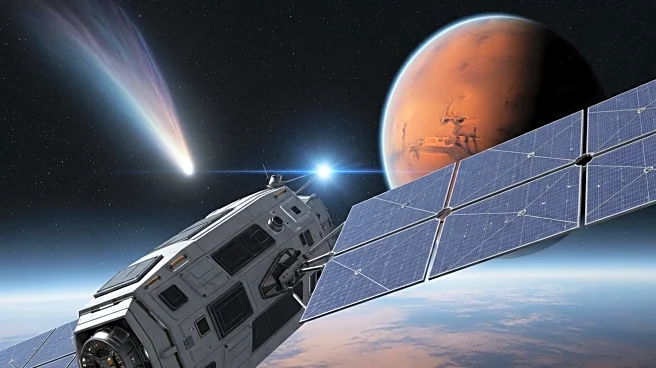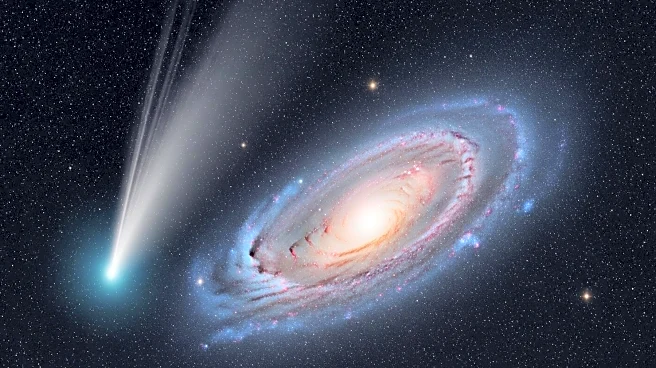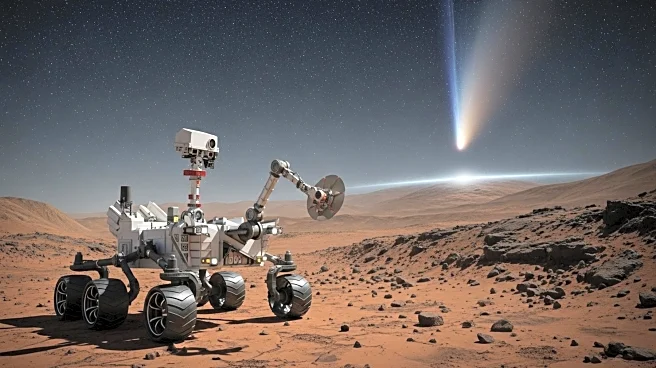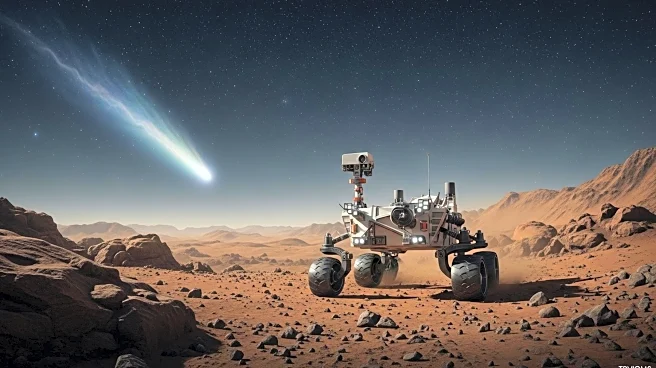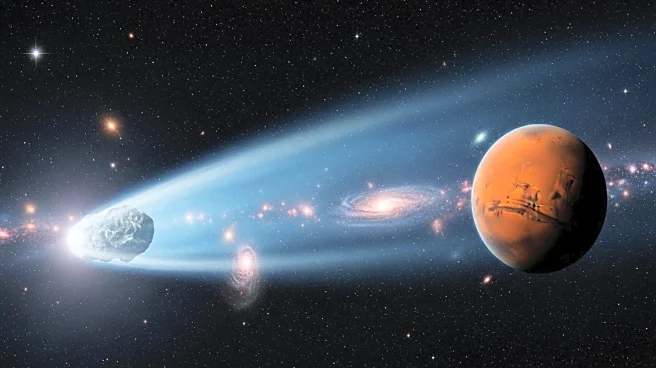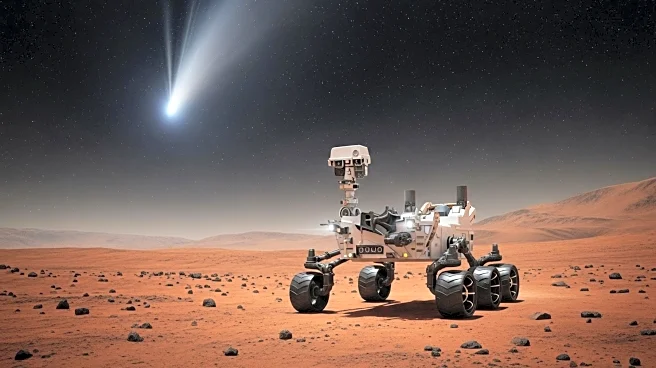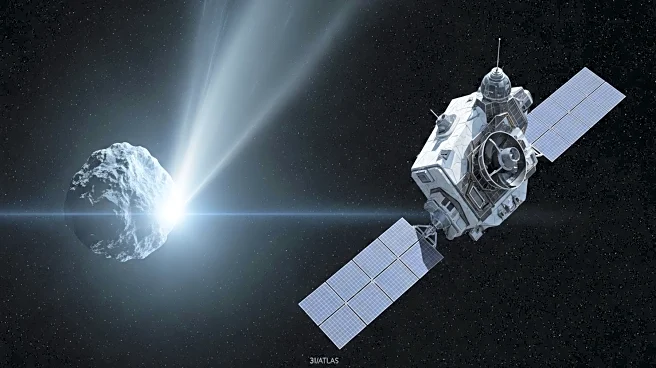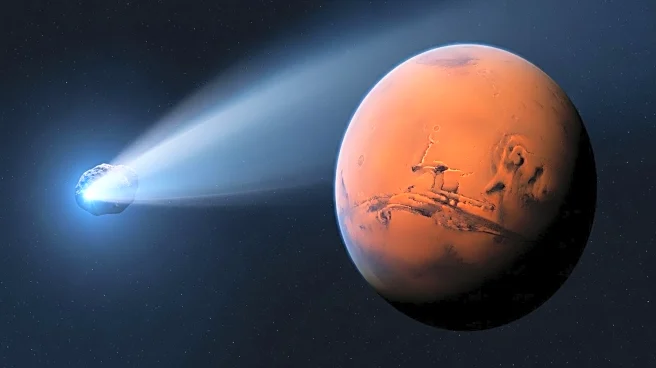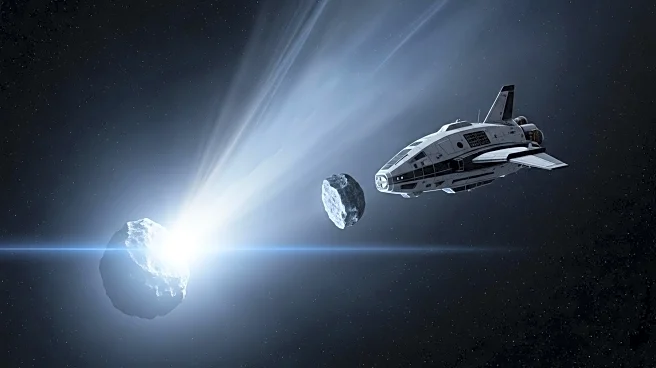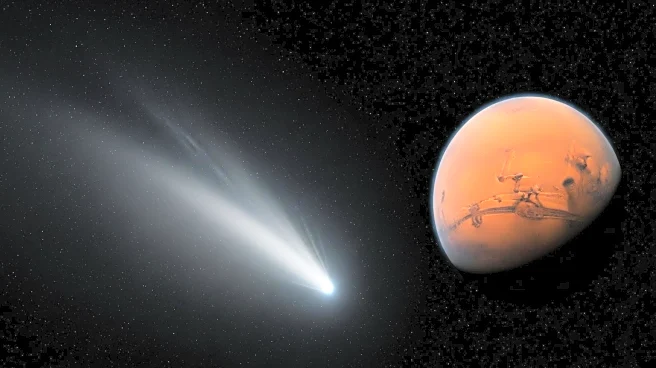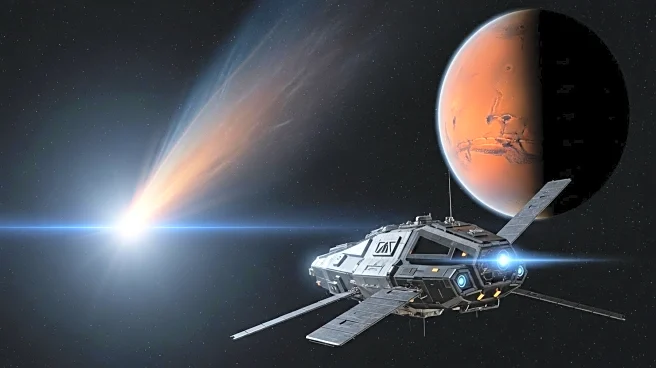What is the story about?
What's Happening?
On October 3, 2025, the European Space Agency's ExoMars Trace Gas Orbiter captured images of the interstellar comet 3I/ATLAS as it passed within 19 million miles of Mars. The images were taken using the orbiter's Colour and Stereo Surface Imaging System, which stacked multiple five-second exposures to reveal the comet. This observation marks a significant achievement, as the comet is much fainter than the orbiter's usual targets. 3I/ATLAS, discovered in July, is the third confirmed interstellar object to enter our solar system, following 'Oumuamua and 2I/Borisov.
Why It's Important?
The study of interstellar comets like 3I/ATLAS is crucial for understanding the composition and formation of distant star systems. These objects carry information about the conditions in other parts of the galaxy, offering a unique opportunity to learn about the universe beyond our solar system. The data collected from such observations can provide insights into the processes that govern the formation of planets and other celestial bodies, potentially influencing future space exploration and research.
What's Next?
The European Space Agency plans to continue analyzing the data collected from the ExoMars orbiter and other spacecraft. Additional observations are expected from ESA's Mars Express and other missions, which will help scientists gather more information about the comet's properties. As 3I/ATLAS approaches the sun, its coma and tail are likely to grow, providing further opportunities for study. The comet is expected to pass by Jupiter in March 2026 before leaving the solar system.
AI Generated Content
Do you find this article useful?
